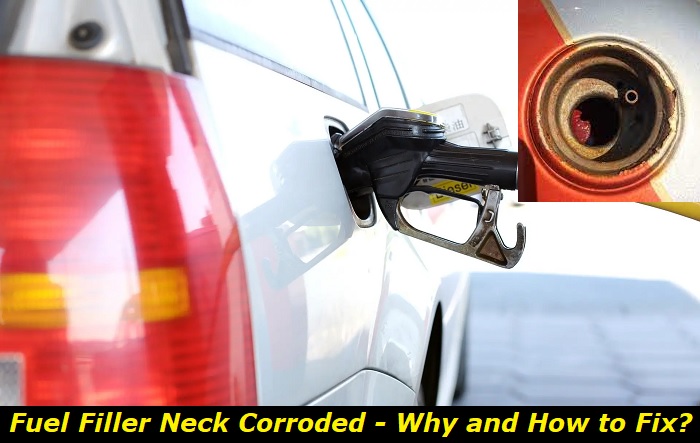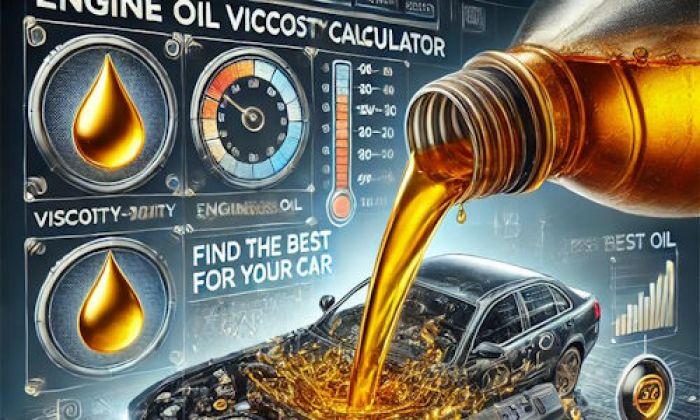You aren't likely to think a lot about this part in your car till it causes some problems. Usually, car owners drive their vehicles for years without even having issues with the filler necks. Do you at all know how it looks and where it's located? But if it starts rusting, you will obviously find out more about it.
Fixing a rusted filler neck is important because it can eventually lead to fuel leaks. This is dangerous and can lead to fires. It's important to locate the affected area, clean it, and make sure there is no hole in it. If the neck has a hole, it should only be replaced with a new one. Repairing is possible if the rust is just on the surface.

Here's what I will tell you in this article:
- Locating the problem with your fuel neck.
- How to take the fuel neck off a car?
- Repairing or replacing the fuel neck?
- Can you drive if the fuel neck is rusty?
- How much is it to have the problem fixed in the shop?
Let's get started!
How do you know there is a problem with the fuel neck in your car?
Well, the first way you may find out that there are problems is visual. You can just see that the metal part of the fuel neck that is visible when you open the gas door in your car is rusty. This causes concerns - maybe the entire neck is corroded and now your fuel is not that safe when it's getting into the tank.
Also, you may smell gas after you pump it into your car. This is especially typical for vehicles that already have a completely corroded neck with a hole in it. Also, it's absolutely undeniable when you fill the full tank. In this condition, some fuel is in the neck, so any small hole will leak gas intensively till the level drops.
Very often car owners will find out that the fuel neck in their car is faulty when they have other things repaired. Their mechanic can tell them that the neck needs replacement because it's rusty or has a hole in it. This is possible to notice when the fuel tank is off the car and the mechanic can see the major part of the neck.
But, in most cases, this is a combination of factors. You will smell gas sometimes, then you will notice that the fuel neck has some spots of rust on it, and eventually, you will tell your mechanic about this and they will have a look to find out that the neck is already dead or dying.
Replacing or repairing?
There are two options you can choose - to replace the neck or to try and repair it. If there is still no hole in it, I suggest the repair is a good idea. The majority of fuel necks are made of aluminum and there are certain conditions under which it can get corroded. But it's still not impossible.
Replacing the fuel neck is only needed when it's not reparable and is dangerous to use. Also, you shouldn't choose aftermarket offers - buy the OEM neck if you want to replace the faulty one. Unfortunately, it's going to cost you some money. These are not very commonly demanded parts, so sellers may surprise you with the prices and delivery time.
Before you buy the new neck, the old one needs to be inspected. Maybe, the smell of gas is caused by a dried-out plastic pipe, a problem with the tank or the tank breather.
How to take the fuel neck off the car?
Although it may seem pretty easy, removing the fuel neck from your vehicle may not be that simple in real life. Usually, the neck is fastened with several bolts in the upper part and then there is another fastening that attaches it to the tank. Some other holding elements may be found in the middle of the neck.
For taking this thing off the car, you may need to take off the fuel tank. Also, this is only possible if you have a car lift.
If you don't know how to do it, chances are you will damage the car paint by trying to remove the upper part of the neck. Also, the connection to the tank may be damaged which will also lead to some other expenses. Buying a new tank is not in your plans, so it's always a good idea to just let professionals do this job.
Taking off the fuel neck may seem like an easy DIY task. But in reality, it isn't.
Can you drive when the fuel neck is corroded?
Well, you can drive if you don't smell gas all the time. If you smell gas, it may be dangerous and may even cause fire. If it's just the rusty fuel neck that you don't like the look of, you can drive without any problems. But it doesn't mean that you should ignore this problem.
Actually, rust on the fuel neck may lead to several unpleasant situations which can eventually cause much more serious and expensive repairs. People tend to think that in older cars it's OK to see some rust now and then but in the case with the filler neck, it's not appropriate.
Here's what it can lead to:
- fuel leaking which is dangerous because you will feel the smell of fuel and it can fire up if heated somehow to a high temperature;
- also, this fuel may leak onto the tank or on some painted elements which will lead to aggressive corrosion;
- the fuel may go down the filler neck and corrode connections with the tank which will lead to more serious leaks;
- it's not uncommon for rust on the fuel filler neck to be infectious and to jump to other metal elements causing more harm;
- some small metal parts or dust from rusty elements may get into the tank and clog the fuel filter that you have there;
- whenever you buy the full tank of fuel, you will also struggle in terms of loss of gas and possible fire danger.
As you see, the rusty fuel neck is not as safe as it may seem at first. This problem has to be solved as fast as possible. Unfortunately, this is not an easily visible part, so even a good inspection is impossible without professional help. You may be wondering about the prices. I will tell you some figures just for understanding of the average price for repair.
How much is it to repair or replace the fuel neck?
If it's still possible to repair your fuel filler neck, the price will mostly include labor. But don't be that happy for now! The labor is not going to be cheap. To get to the fuel filler tank, the mechanic will need to take off the tank, get to quite inconvenient places, and have several specific tools.
So, the labor is not going to be just one hour. You should count about 4 hours of labor or even more if the repair itself is going to be pretty long. So, just multiply it by the average hourly rate in the shop you are working with. In a dealership that is going to cost you about $350-$400 just for labor.
If you want to replace the filler neck, here's what you should consider:
- the labor is still going to be pretty expensive - about 2 hours are needed for this job;
- the aftermarket filler neck may cost about $100, but it's not going to last long and be of high quality;
- the OEM filler neck for an average car is going to cost you about $200-$300;
- also, you may need to wait for some time and this may also require some additional expenses on shipping.
So, initially, the problem doesn't seem to be that bad. But when you count everything up, it appears to be an expensive repair. Unfortunately, DIY repairs are not possible unless you have a good car lift and a lot of tools for working with your vehicle. Though, in some cars, taking off the filler neck is much easier.
Why can the filler neck be corroded?
First of all, they get corroded because of their age. Older filler necks may get covered in different residues that cause corrosion after some time. It doesn't mean that you need to replace them once a little corrosion is visible. Maybe, cleaning it will help.
Also, the connections of the neck with the tank may be faulty. If your tank is badly fastened and vibrates when you drive, it can just break the filler neck. Any crack will result in serious fuel leaks and other problems.
This may be the aftermarket filler neck. While most OEM parts are made of aluminum or plastic, some aftermarket filler necks are iron. It means they will corrode over time. Maybe, the previous owner of this car installed a cheaper neck before selling the vehicle to you.
The neck may have been damaged. Any damage boosts the chances for corrosion. So even when you insert the nozzle at the gas station, you should be careful. Damaging the filler neck is not what you want to do.
About the authors
The CarAraC research team is composed of seasoned auto mechanics and automotive industry professionals, including individuals with advanced degrees and certifications in their field. Our team members boast prestigious credentials, reflecting their extensive knowledge and skills. These qualifications include: IMI: Institute of the Motor Industry, ASE-Certified Master Automobile Technicians; Coventry University, Graduate of MA in Automotive Journalism; Politecnico di Torino, Italy, MS Automotive Engineering; Ss. Cyril and Methodius University in Skopje, Mechanical University in Skopje; TOC Automotive College; DHA Suffa University, Department of Mechanical Engineering






Add comment